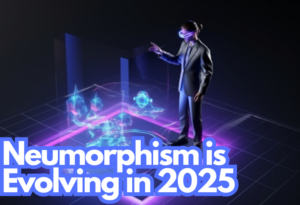The Rise of Hyper-Personalized Interfaces

Introduction
In 2025, a one-size-fits-all digital experience simply doesn’t cut it.
Users expect more than just sleek interfaces—they want apps, websites, and platforms to anticipate their needs, remember their preferences, and evolve with their behaviors.
Yet, businesses struggle to meet these rising expectations. Why? Because most systems are still designed for the average user—not the individual.
That’s where hyper-personalization steps in.
At UXGen Design Studio, we’re helping companies move beyond generic interfaces to deliver experiences so tailored, they feel hand-crafted for each user. By combining data science, UX psychology, and advanced AI tools, we turn digital experiences into digital relationships.
Let’s dive into the power of hyper-personalized interfaces—and how your brand can benefit.
The Problem with Generic Interfaces
The average user today engages with over 30+ digital platforms daily. But instead of being delighted, they’re overwhelmed. According to a 2024 Salesforce study, 65% of users abandon websites that fail to cater to their personal preferences within the first 30 seconds.
Why does this happen?
- One-size-fits-all UI: Same layout, same journey—regardless of user intent.
- Lack of behavioral adaptation: Most platforms can’t recognize returning users or adapt content dynamically.
- Information overload: Irrelevant content clutters user journeys, leading to frustration and higher bounce rates.
This disconnect leads to measurable consequences:
- Up to 49% lower conversion rates on non-personalized platforms.
- 74% of users feel frustrated when content is not relevant to them (Infosys).
- Poor retention, weak engagement, and lost revenue opportunities.
The Future is Hyper-Personalized: Insights & Solutions
In 2025, the leading digital experiences are tailored, predictive, and emotionally intelligent.
Here’s what’s powering the shift:
1. AI-Powered Behavioral Intelligence
Smart interfaces today learn from each interaction—adjusting layouts, colors, and content dynamically based on user behavior.
Tools like real-time analytics, eye-tracking AI, and session replays help designers fine-tune experiences.
2. Micro-Segmentation and Predictive UX
By dividing users into narrow behavioral segments, we can deliver UI versions tailored for:
- First-time users
- Power users
- High-intent shoppers
- Return visitors
With predictive UX, we’re not just responding to behavior—we’re anticipating it.
3. Emotionally-Aware Design
Using principles from UX psychology—such as Hick’s Law, Fitts’ Law, and Peak-End Rule—we’re building UIs that resonate on a human level.
Designs that feel calm, intuitive, and emotionally intelligent are proven to increase user satisfaction by 38%.
4. Real-Time Personalization Engines
Platforms now integrate with AI engines like Dynamic Yield and Adobe Target to modify UI components—on the fly.
This results in experiences that evolve in real time, based on user interactions.
5. Accessibility Meets Personalization
Hyper-personalized doesn’t mean exclusive. Modern designs adjust not only by behavior but by ability—offering text resizing, contrast shifts, and voice control dynamically.
Real Results: UXGen Design Studio Case Studies
Case Study 1: Personalized E-Commerce Dashboard
Client: Fashion retail brand
Challenge: Low retention and cart abandonment
Solution: Implemented a hyper-personalized homepage based on user interests, shopping history, and location.
- Conversion rate improved by 47%
- Average session duration increased by 31%
Case Study 2: Adaptive UI for Healthtech
Client: Digital health tracking app
Problem: Users were overwhelmed by too much data.
Approach: Built a modular dashboard that adapted based on user fitness levels and preferred health metrics.
- 60-day retention jumped by 42%
- User satisfaction (CSAT) grew by 29%
Case Study 3: Learning Platform Transformation
Client: Online ed-tech platform
Issue: Drop-off after 2nd module.
Fix: Personalized learning journeys, auto-adjusted difficulty levels, and emotional design cues.
- Completion rates rose by 54%
- Engagement doubled within three months
Takeaways for Designers & Founders
If you’re aiming to build more human-centered, personalized digital experiences, start here:
- Track Behavior Early: Begin personalizing from the first interaction.
- Leverage Modular Design: Design components that can adapt to user preferences.
- Use Personalization Engines: Implement AI-driven platforms that support dynamic UI adjustments.
- Avoid Over-Personalization: Maintain clarity and structure. Don’t overwhelm users with too many changes.
- Test & Iterate: Run A/B tests across segments to find the right balance of design and data.
Steps Students & Junior Designers Can Follow:
- Study Behavioral UX: Focus on how users interact, not just what they see.
- Master Personalization Tools: Explore tools like Figma variables, UXCam, and Dynamic Yield.
- Work on Real Projects: Simulate user journeys for multiple personas.
How UXGen Design Studio Can Help You
At UXGen, we combine strategy, design, and technology to create hyper-personalized experiences that scale.
Here’s how we support our clients:
- UX Research & Strategy: We analyze user behavior, segment intent, and build adaptive frameworks.
- Custom Interface Design: Modular, responsive UIs that adjust to your users in real-time.
- AI-Powered CRO: We increase conversion rates by up to 62% using machine-learning-driven interface optimization.
- Team Enablement: Our UXGen Academy programs help your teams build personalization-first mindsets.
Working with our ecosystem—UXGen Technologies, UXGen Design Studio, UXGen Marketing, and UXGen Academy—means:
- Better product adoption
- Increased ROI from digital assets
- Enhanced user trust and retention
Conclusion
Hyper-personalization isn’t just a UX trend—it’s the future of how brands connect with users. In a crowded digital world, relevance is the ultimate differentiator.
Companies that embrace personalized interfaces experience:
- Higher engagement
- Longer retention
- Stronger emotional connections
If you’re looking to build smarter, more human-centric digital experiences—UXGen can help you design your way there.
Let’s create your hyper-personalized future—together. Connect here
FAQs
Q: What tools help with hyper-personalized UI design?
A: Platforms like Dynamic Yield, UXCam, and Segment are great starting points.
Q: Can personalization slow down performance?
A: If implemented poorly—yes. But optimized personalization enhances both speed and experience.
Q: How do I ensure privacy with personalized data?
A: Always follow GDPR/CCPA compliance and communicate data usage clearly to users.
Q: Is this suitable for small startups?
A: Absolutely. Starting early with modular and adaptive UI sets you up for scale.
Q: Can this work with voice or AR interfaces?
A: Yes. Personalization can be applied across emerging interfaces too.

How Neumorphism is Evolving in 2025 UI Trends: Bridging Beauty and Functionality
Minimalism vs. Maximalism in UI Design: Crafting Balanced Digital Experiences

About the Author
Subscribe for fresh
tips & top articles
UXGen Studio uses the data submitted through this form to send you relevant marketing insights, blog updates, and learning resources. To learn more, read our Privacy Policy.





